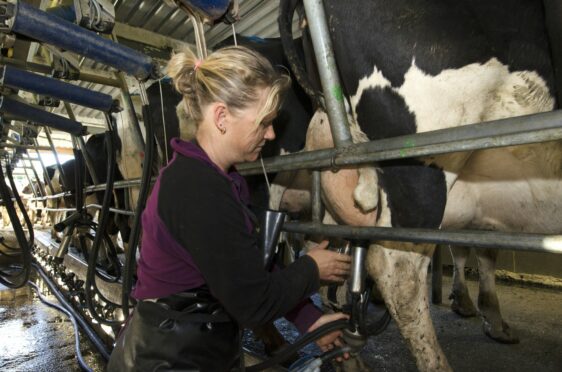Last spring potato and horticulture growers voted by a large majority to shut their AHDB levy boards down.
Growers told me at the time they had little knowledge of what the boards did and saw little financial benefit to their businesses from the levy.
When I asked leading horticulture growers in one of the most dynamic and innovative sectors in Scotland if they could name one thing the Horticulture Board had done to help their business, they were unable to do so.
That for me was the final nail in the coffin and I knew the vote was lost.
For AHDB and QMS, demonstrating the financial benefits of their work to their levy payers is fundamental to their survival.
It is a challenge faced by farmer levy-based organisations worldwide and many respond in different ways.
New Zealand
In New Zealand, the Dairy board and the Beef and Lamb board hold votes on their levy every six years and that threat means they are absolutely focussed on delivering real financial benefits to their levy payers.
In the latest ballots both boards secured large majorities in favour of the levy with a high turnout of farmers voting.
Critics of ballots claim levy boards will be distracted from the day job during the lead up to the vote or, worse still, bow to populist calls for buckets of money to be thrown at generic TV advertising which make farmers feel better but deliver few long-term benefits.
Speaking to New Zealand board members they claimed any short-term distraction was dwarfed by the large mandate the farmers’ vote gave them to deliver their agreed programme of work.
Australia
In Australia they take a different and better approach in my view.
Meat & Livestock Australia (MLA) has by law to undertake a Performance Review every five years to evaluate their performance and financial returns to Aussie farmers.
It must be carried out by an independent audit so they can’t mark their own homework.
The audit provides MLA with rigorous information to help them prioritise programmes with the highest returns and highlights non-performing ones. But most importantly it tells Australian farmers the return they get for every levy dollar spent.
In their latest report, opening new export markets returned 5.1 dollars for every dollar of farmer levy. Promoting beef consumption in the home market returned 1.9 dollars for every dollar of levy.
Overall, for every dollar invested by MLA the return to Aussie farmers was 4.44 dollars.
It seems to me this type of rigorous independent scrutiny demonstrating the value for money levy boards deliver to levy payers would transform the debate over their future in the UK.
Board
As an independent AHDB board member, one of my great frustrations was the way the organisation was pushed and pulled by every loud voice wanting their issue to be a priority for us.
Before Potatoes and Horticulture were closed, AHDB had over 40 committees to service and our corporate plan contained 190 different priorities.
With 190 priorities and a relatively small budget of £60 million it was impossible for AHDB to do justice to all of them and the costs of supporting our many committees swallowed up time and money.
During my time a substantial piece of work was undertaken looking at introducing a similar system to MLA’s which would evaluate the return-on-investment farmers were getting for their levy.
That work now appears to be shelved which seems to me to be a mistake and a missed opportunity.
That information would have been of real value to levy payers who are being asked by AHDB to vote in April on how they want their levies to be spent.
With rigorous independent information on the value for money of each programme farmers could at least make an informed choice on their priorities.
Without that knowledge the ballots risk being little more than a popularity contest.
Quality Meat Scotland face similar challenges to AHDB with over 80 objectives in its corporate plan and 15 different committees to service.
Objectives
They do have a more strategic focus around building the Scottish brands but 80 different objectives with a budget of just over £6million does seem rather over the top.
Even worse, some Scottish livestock farmers – including leading industry figures – seem to believe that QMS is solely responsible for maintaining the Scottish beef premium.
With the recent loss of the premium, QMS is getting the blame with some farmers suggesting they might stop paying the levy.
This is economic nonsense as QMS has no control whatsoever over the market price for Scotch beef.
I believe levy boards still have a key role to play in helping farmers respond to the big challenges such as net-zero, but they desperately need to focus on the areas where they can make the biggest difference.
An MLA-style evaluation system would bring real focus to levy boards’ work and give farmers and growers confidence their levies were delivering value for money to them.
George Lyon is a former MEP and a former president of NFU Scotland. He is a senior consultant for Hume Brophy.

